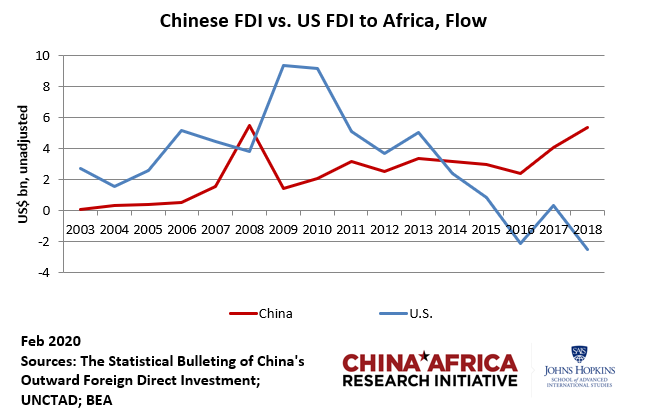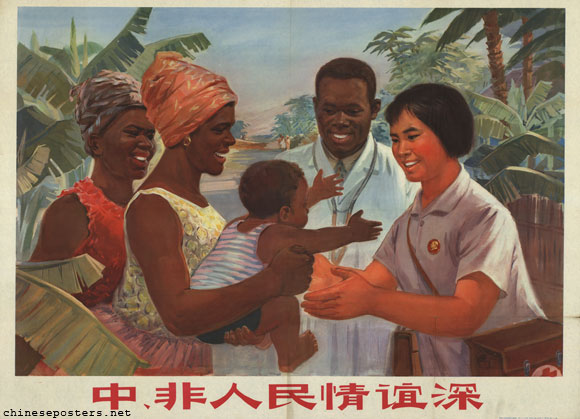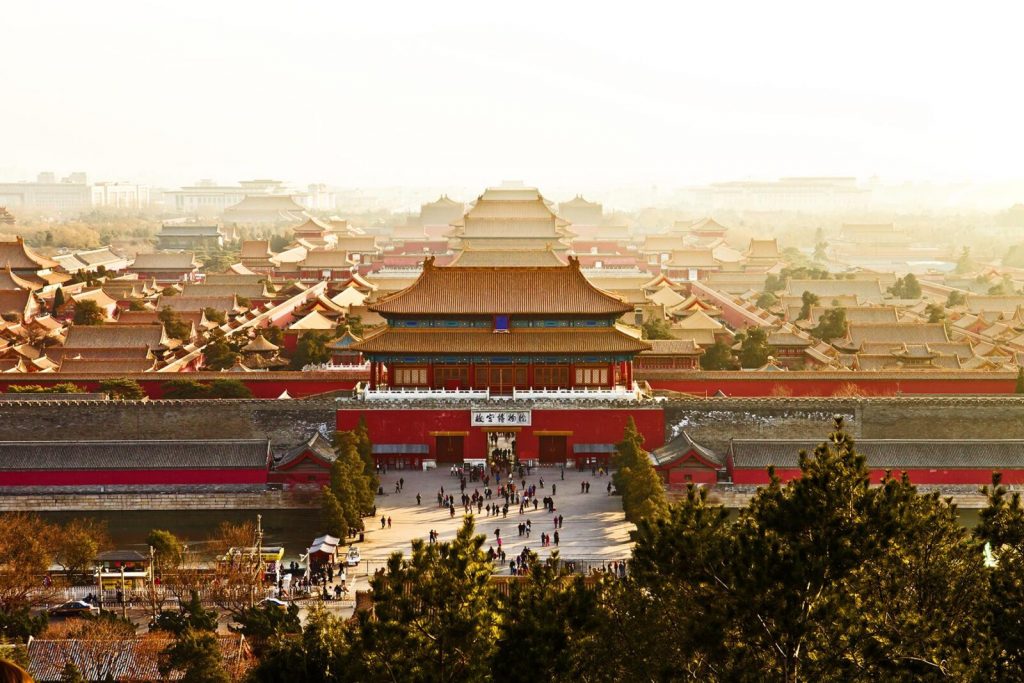The African continent is a key region where China is expanding and turning to the most important player. ‘The South-South’ strategy is being successfully implemented and, probably, by 2050 China will completely dominate the continent driving out other geopolitical figures.
The PRC’s close attention to Africa can be explained by several reasons. First of all, current traditional contacts established in the second half of the twentieth century. Secondly, weakening of the positions of the states of Europe and the United States on the continent, as well the loss of the Kremlin’s positions following the USSR’s fall. Thirdly, China’s economic pragmatism together with political unscrupulousness enabling to work effectively with African regimes, including dictatorships.
Africa is the easiest target and at the same time it is the tastiest resource morsel for Beijing. That is why the PRC is intensifying its activity in the states with the least geopolitical and geo-economic competition – with few exceptions in the sub-Saharan region. However, the size of the continent, the number of states and nations, and social technological backwardness challenges the neocolonization implementation plan requiring significant resources contributed, and, mainly, time. China’s strategy to increase efficiency and accelerate project implementation is based on three main points.

First, unification of social systems, logistic barriers removal and the unification of markets (states in the future) into a single political union. These are the goals China’s tactical actions in the region are targeted, and that is why Beijing supports integration ideas in Africa. Globally speaking, Beijing’s final geopolitical goal is creation of an African Union with a deep integration level and strong financial and economic dependence on the PRC.
The mentioned project will be managed by the full China-controlled local elite. Over the past decade the work on its formation has been actively performed through schools, Confucius institutes, internships for young people in China and other cultural and educational projects. It is much easier to manage such a project than to establish a network of bilateral relationships and compete with Western countries for every individual market. The integration project will be more understandable and sustainable, and, that is most important, it will enable satisfying China’s economic and geopolitical interests mentioned in the following directions.
Investments in the African economy and creation of a powerful resource base in the region. According to official statistics, in 2018 China’s foreign direct investment in African countries totted up $5.4 billion. However, it should be noted that this is far from all Chinese investments in the continent. The lion’s share of the funds was invested through Chinese companies registered in ‘third’ countries. In 2018 South Africa, DRC, Mozambique, Zambia and Ethiopia were financed most of all. Generally, China is allegedly to invest $60 billion in African countries.

First of all, China is interested in the extraction and export of resources. Here the paramount is access to energy resources whose import China’s development and economy generally is dependent on. Despite the neighboring Arabian Peninsula, traditionally served as an energy supplier, China intends to diversify its supplies, mainly, at the expense of Africa. Back in 1998, the oil share that China received from the African continent was 8%; in 2006 it reached 31.5%. Later on its share decreased but the volume did not change. The main oil supplies from Africa to China are exported from Angola (2nd – 3rd place depending on the year), the Republic of Congo and Sudan. China also buys/produces oil in Nigeria, Equatorial Guinea, Gabon, Algeria, Liberia, Chad, Kenya, Sudan, Cameroon, Libya, Ghana, Ethiopia, Mozambique, and South Sudan. However, Angola is China’s most important resource base.
Moreover, China is Africa’s key mineral resources importer to serve the needs of the Chinese industry. Chromium, platinum, cobalt, iron, gold, and silver are the main minerals China imports from the African region. Chinese companies are showing increased interest in the extraction of manganese ore (Gabon, Cote d’Ivoire, Namibia), chrome ore (South Africa), platinum (South Africa, Zimbabwe), cobalt (DRC), copper (DRC, Zambia), ferrochrome (Zimbabwe), uranium (DRC, Namibia), bauxite (Republic of Guinea, Mozambique, Cote d’Ivoire), iron ore (Gabon, Liberia, RK, South Africa), palladium (South Africa), as well as gold and diamonds. Chinalco and Zijin are the most active Chinese multinationals companies in Africa.
Food and timber: China is actively involved in deforestation and timber exports from Africa. The main zones of China’s interests here are Gabon, Cameroon, Equatorial Guinea, DRC, and Liberia. As experts say, a huge felling area in wood is harvested illegally.
Chinese companies are also active in the agricultural market; however, it is not a priority yet. There are various estimates of the land Chinese companies own, from 253 thousand to 6 million hectares. Zimbabwe, Tanzania, Rwanda, South Africa and Cameroon are the states that China is interested the most in the agro-industrial complex development. At the same time, Chinese companies invest a good deal of money in extracting and developing aquaculture in Mozambique and Mauritania.
It is important for the Chinese economy that goods and services market in African countries is expanding. In parallel to investing and creating production facilities in many countries China is forming a category of cheap Chinese goods consumers. Thus, we can talk about formation of a stable system of resource regional economies dependent on Chinese goods. The peak of mutual trade between China and the countries of the African continent fell in 2015. According to CARI, in 2018 the trade volume reached $185 billion (+$30 billion in comparison with 2017). Angola, South Africa and the Republic of Congo were the key exporters to China. Nigeria and Egypt were the main buyers of Chinese goods.
Participation in scale infrastructure projects and creation of industrial zones. As of now China is pursuing a policy of industrialization in a number of African countries. At the same time, it often uses the tactics of lobbying special economic zones.
The main objectives of this policy are the following:
A) Creation of transport and energy infrastructure. Further development on the continent requires of China solving the problem of easy resource transportation between key points and increasing the region’s energy capacity for industrial development. In addition, Beijing is faced with the tactical task to ensure free and most efficient raw materials export from Africa. Today, China is underway or has already launched a significant number of projects that are supposed to fix this problem. The PRC has invested in the construction of hydropower plants in Sudan, Angola, Kenya, Ghana, Madagascar and other countries. Mambilla HPP (Nigeria, 3,050 MW, $5.8 billion), Caculo Cabaca HPP (Angola, 2,171 MW, $4.5 bln.), MeroweDam HPP (Sudan, 1250 MW, $2.9 bln.) are among China’s most ambitious projects on the continent.
Depending on the natural resources availability in the country Beijing uses different fuel types in building power plants (coal, gas, peat, heavy hydrocarbons). According to the IEA, the average hydraulic power level in Chinese companies’ projects is 188 MW. 78% of Chinese companies’ energy projects in the south of Sahara are financed by Chinese banks and financial institutions; 10% of them are financed through mixed credits given by Chinese and other foreign financial institutions.
China is actively involved in building highways and railways in Zambia, Tanzania, Namibia, Botswana, Nigeria, Angola, Ethiopia, Kenya and other countries. The PRC has already built more than 5,600 km of railways and 4,500 highways. The Heavenly Empire plans to cover Africa with a railroad system – the only condition making unification, integration and control of such remote territories a solvable task. So far, Beijing’s focus is East Africa and the regions with a strong necessity to ensure the raw materials delivery to ports. However, according to the plans an integrated road system will cover the whole continent.
In addition, creation of additional capacities in maritime trade and formation of a bridgehead for the naval base construction in the long term encourage China to invest in ports. According to Center for Strategic & International Studies, as of now serving as an operator or owner, Beijing has invested in the ports of Sudan, Djibouti, Tanzania, Mozambique, South Africa, Angola, the Republic of Congo, Cameroon, Nigeria, Togo, Ghana, Cote d’Ivoire, Sierra Leone, Guinea, Cape Verde and Mauritania.
As a rule, the infrastructure development is packaged with Chinese companies’ field development agreements. At the same time, they often grant assistance or a soft loan. Beijing uses this opportunity both for its image improvement and actual bribery of local elites, and tactical problems solving. For example, the Chinese-financed reconstruction of the Benguela Railway in Angola aims at facilitating the minerals export from the DRC and Zambia; and construction of a railway and a port in Liberia is supposed to ensure iron ore export from Liberia and Guinea.
B) Use of cheap labor and human capital development. The creation of industrial capacities, including the ones focused on the domestic market, solves China’s several problems at once.
China can use labor much cheaper than in China and make the business more profitable. The solution effectiveness is clearly shown in Ethiopia.
Affordable and cheap labor develops the category of Chinese consumers, floods the domestic economy with money, relieves social tensions and creates a positive image of China in the region. The most spectacular cooperation examples are production facilities in Lusaka, Zambia, the Chambishi sub-zone (manufacture of clothes, technology, tobacco and electronics); Jinfei, Mauritius (manufacture of textiles, equipment, as well as trade, tourism and finance); Oriental, Ethiopia (manufacture of electrical engineering stuff, building materials, steel and metallurgy); Ogun, Nigeria (manufacture of building materials, ceramics, hardware, accessories, food, computers and medical devices); Lekki, Nigeria (manufacture of transport equipment, textiles, home appliances, telecommunications); Suez, Egypt (manufacture of gasoline equipment, electrical appliances, textiles and automobiles).
C) Load of orders on Chinese companies. As a rule, all projects implemented under bilateral agreements between China and the national governments of African countries went to Chinese contractors. Thus, China manages not only to give its own business the opportunity to develop, but also to control the situation, consumption of materials, funds and the quality of work. According to China Africa Research Initiative, in 2018 Chinese companies worked on projects amounted to $48.84 billion, 0.5% less in comparison with 2017. The key states where these projects are being implemented are Algeria, Angola, Kenya, Nigeria and Ethiopia.
These are the states where the most Chinese workers are involved. According to the official data, at the end of 2018 they numbered 201,000. However, unreported employment is much higher. On experts’ estimates, as of now about 1 million Chinese are working in African countries. It is worthwhile noting that China actively implements social infrastructure development programs – housing, hospitals, stadiums, government buildings, places of worship, etc. Chinese companies are also contractors.
Controlled Africa as a stepping stone to a new status. The rate of investment and construction, the scope of official financial aid ($3.3 billion as of 2018) and credits given for infrastructure projects impress. It looks especially vivid against the background of the state many countries find themselves now. In most countries China helps to resolve such issues as unemployment, healthcare, and supports in difficult situations as well (for example, during the COVID-19 pandemic). Such interest and rate of the regional development are reasoned by China’s inability to develop itself dynamically without a powerful resource base like Africa, for example. In fact, the issue goes beyond energy resources or minerals. This is extremely important at the current stage of the regional expansion. However, in the long term, Beijing considers the African continent as the territory to promote Chinese culture, values and lifestyle. It will strengthen economic positions, provide additional growth points, expand geopolitical presence and enable to exceed the United States and other Western countries in development.
On our estimates China is not going to expand the living space for its citizens at the expense of African countries. Surely, their number will grow directly proportional to the national economies’ involvement in the system that the PRC is building. In addition, on a pro-rate basis Chinese military contingent and private military companies will increase their presence in the region. It will look like protection of its own business during expansion rather than support for the colonial administration. Naval bases deployment on the Indian Ocean and the Atlantic, as well as the policy of military-industrial complex enterprises on the continent will serve the same goal (light weapons manufacturing plants have been already built in Sudan, Mali and Zimbabwe).
The Chinese are gliding into Africa, being in the status of ‘guests’ at the beginning and moving to the ‘host’ status. The status change will not be negatively taken either by the local population or the elites. Jobs and social benefits have been already provided for the population, and the elites will be gradually replaced by pro-Chinese ones. The expansion will result in the full involvement of African population in China-built system. To make the process faster Beijing uses the ideas of a united African Union, anti-colonialism, sustainable development and pan-Africanism at the political and ideological level.
Extremely extensive use of the regional resources (China’s famous tactics) can change the situation in the social sphere and at a certain stage of the social development can cause discontent among the population. However, so far this is not a serious problem. Great Britain, USA, France, Russia, Japan and India have lost the opportunity to seize the initiative and intensify their activity on the continent. China has gone too far in its geo-economic projects. It means that in case of the successful African Union project implementation China will get vast opportunities for its development and strengthen its positions in the Indian and Atlantic oceans utterly and completely.





